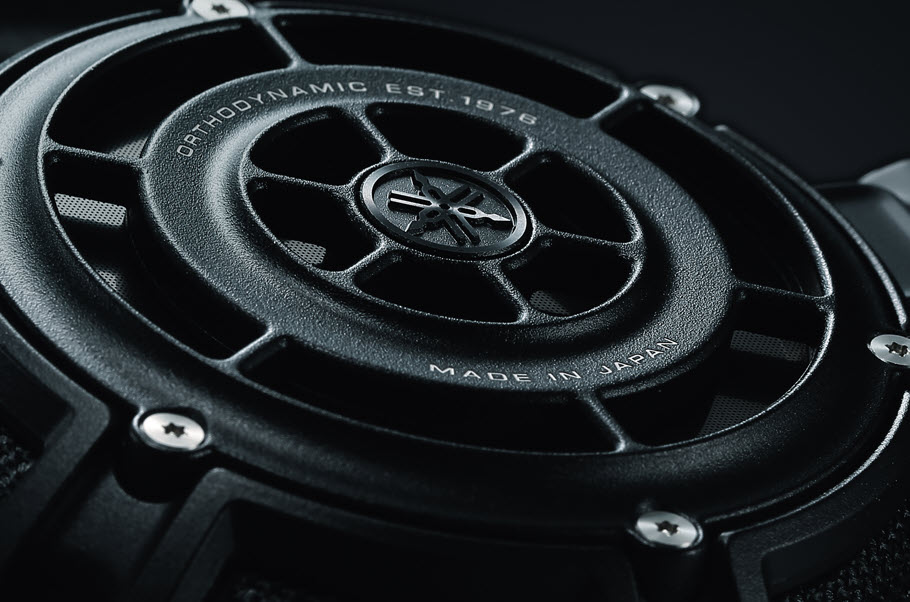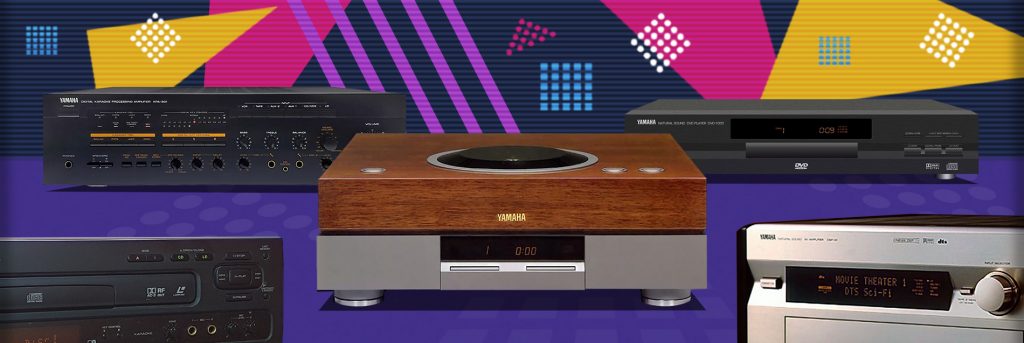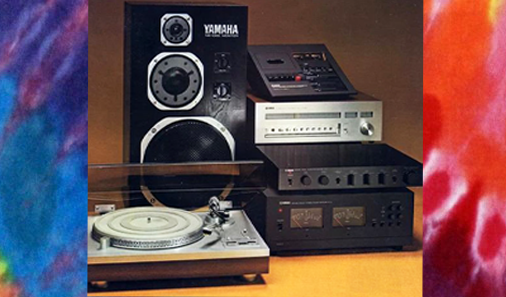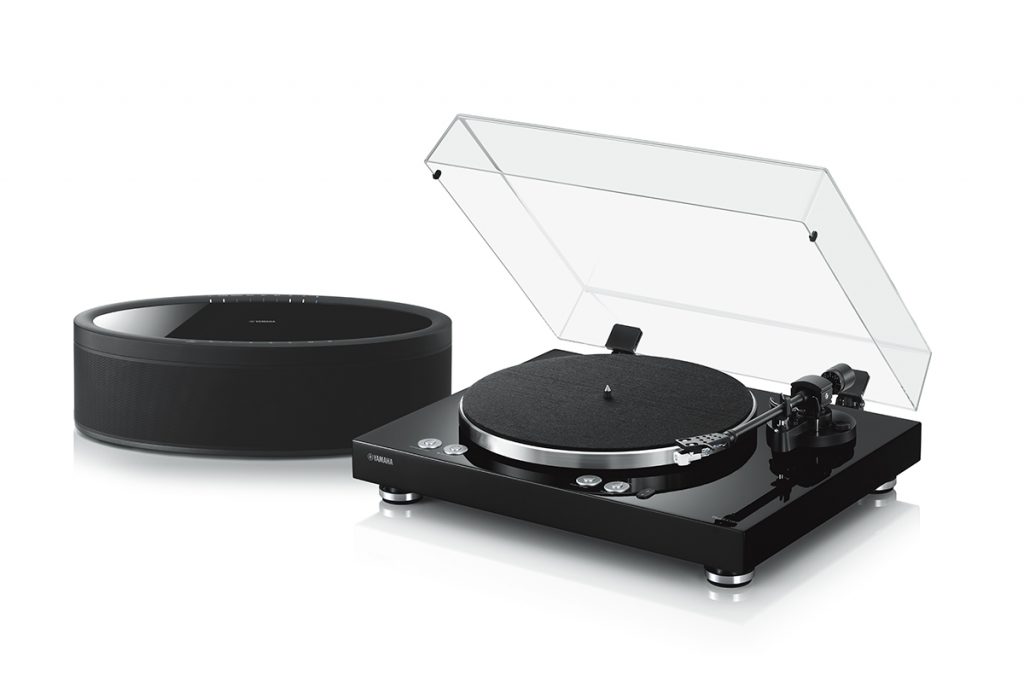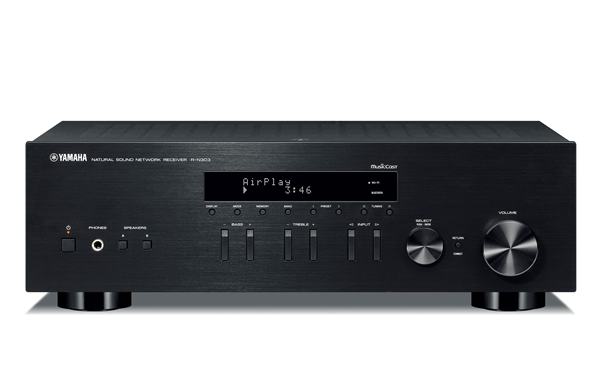Cult Classics, Part 2: Vintage Yamaha Gear of the 1980s
The ’80s called. It wants you to check out some legendary audio gear.
It was a decade of decadence. With iconic albums like Thriller, classic films like Back to the Future and pop-culture trends like spandex, mullets and arcades, the metaphorical sports car trunk of the 1980s was filled to the brim with a unique brand of creativity. The audio gear was no exception.
If the 1970s were considered the golden age of Hi-Fi, the 1980s were more of a transitional period with regard to home audio. Yamaha continued to improve traditional analog audio devices, but more importantly, the technical innovations of those years laid the foundation to bring us into the age of digital audio.
PX-1 / PX-2 Turntables (1978, 1980)
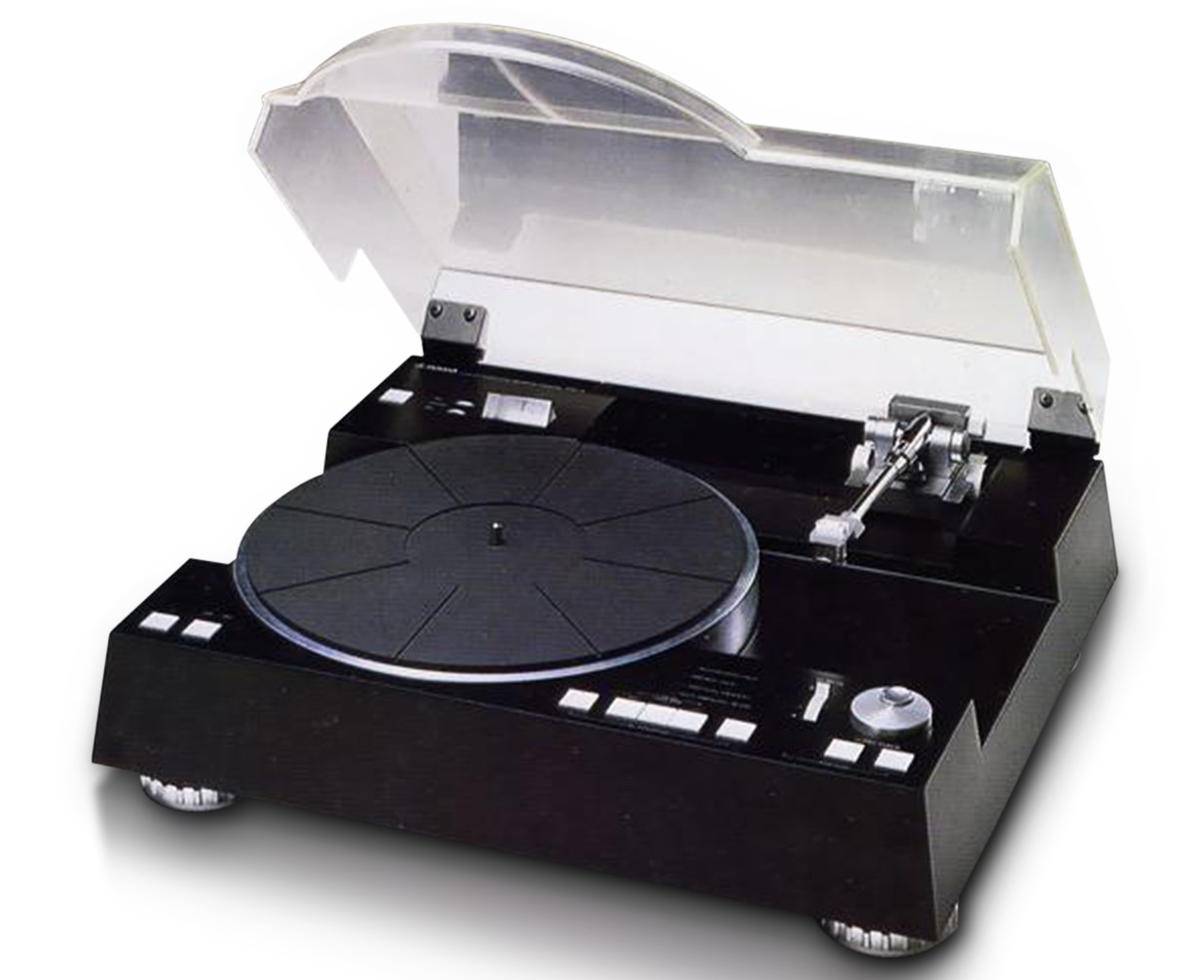
Yamaha broke with conventional turntable design with the PX series of turntables. The flagship PX-1 was only sold overseas but the PX-2 drew a lot of attention here in the U.S.
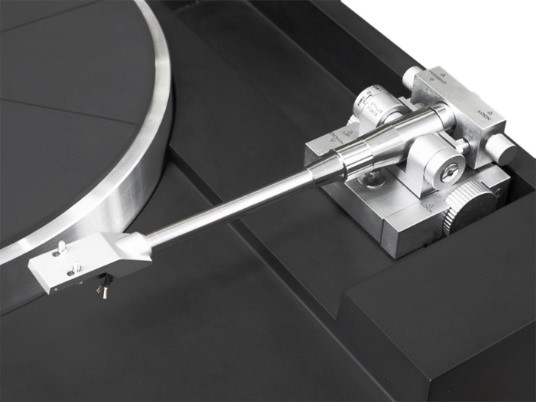
The linear tracking mechanism employed by PX models conquered the long-standing problem of tracking error. By copying the linear characteristic of vinyl cutting lathes, the stylus was always perfectly perpendicular to the record groove across the entire album. The +/- 0.15 degrees or less of error was 20 times more accurate than a modern S-type tonearm. In addition, the tracking servo used LED opto-coupler light-sensing modules, which were very new at the time. These touchless sensors sent tracking position signals to the motor drive system for perfect alignment.
Notice there is no finger lift on the head shell. The tonearm position control was electrically controlled from buttons on the top of the turntable. The controls, labeled UP and DOWN, LEFT and RIGHT, made placing the needle on the record kind of like driving a spaceship. It was a very cool way to impress your friends!
CD-1 CD Player (1982)

The dream of digital audio became a reality with this first-generation CD player. Instead of bringing the disc to the motor mechanism, a single press of a button brought the entire playback system out to the user with a Star Wars-like motorized transport system.
A second motorized drawer revealed an impressive number of programming buttons: Yes, you could program which order to play the songs on a disc! A primitive method for making playlists, for sure, but very advanced technology for the time.
CD-1 owners had to pay some $1,400 (over $4,000 in today’s currency) for all this cutting-edge technology. And with the unit weighing in at almost 30 lbs., there was no question that you were buying a very substantial piece of audiophile gear.
B-6 Power Amplifier (1981)

The 1980s saw many advancements in power amplifier technologies, and the 200 watts per channel B-6 was loaded with innovation — most notably an X-Power supply and X-Amplifier circuitry.
Instead of regulating the power after it was converted inside the unit, X-Power modulated the amount of current going into the unit itself. The B-6 was fully capable of blowing household circuit breakers if it needed extra power, i.e., blasting music for a party.
The X-Amplifier circuitry monitored the audio signal for high amplitude transients and activated a secondary high voltage power supply to pass extremely high dynamics. These circuit designs were crucial to the amplifier’s very high efficiency and allowed it to be housed in a unique chassis without the need for huge cooling heatsinks.
Unsubstantiated rumors suggest the mythical healing powers of the pyramid were employed to achieve the extremely low 0.003% THD distortion level. Even if not true, the look of the B-6 was truly eye-catching.
K-1000 Cassette Deck (1982)

Cassettes were the most common recording format in the 1980s because of their simplicity. Unfortunately, the cassette system was originally developed for voice dictation and not intended for high-fidelity music. However, the consumer audio industry was full of bright engineers who were determined to fit a square peg into a round hole. The three-head (record, playback and erase) K-1000 did a pretty good job by incorporating Dolby and dbx noise reduction. But the cassette mechanism itself was the masterpiece of this deck; dual capstans were used to precisely tension and track the tape across the heads while maintaining exact speed though the entire tape. This sophisticated mechanism was employed in several generations that followed. Why mess with perfection?
CD-X1 CD Player (1984)

The high cost of early CD players kept them out of the hands of the general population. Yamaha saw a need and proceeded to meet it. The CD-X1 was the industry’s first under-$500 CD player. For the first time, digital music was available to the masses.
During the 1980s, Yamaha was expanding their proprietary Large-Scale Integrated Circuit (LSI) manufacturing capabilities. The YM3511 CD controller and the YM2201 demodulator became industry standards as many manufactures integrated these chips into their own products.
The YM3511 was responsible for laser focus, tracking servos, tracking motors and spindle motor disc speed. The signal generated from the laser was then sent to the YM2201 for processing and demodulation to usable digital audio. These two chips replaced multiple densely packed circuit boards, achieving lower production costs and greatly improved reliability.
M-80 Power Amplifier (1984)
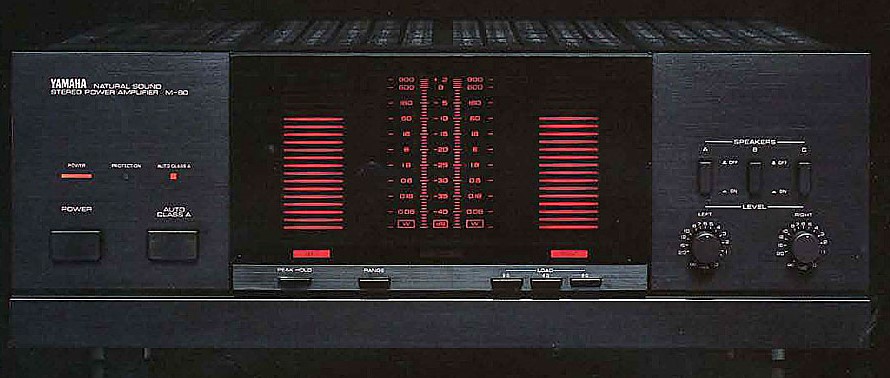
The monster M-80 is still recognized today for its distinctive LED bar graph power meter display, which practically begged the user to crank it up fully — something that left no doubt as to how much power was being pushed to the speakers. But behind the mesmerizing display was an absolute beast of an amplifier.
The amp boasted a whopping 250 watts per channel and a tracking power supply that engaged when high power dynamics were needed. Different from a switching power supply, which shifts to maximum voltage when triggered, this tracking supply followed the output signal and always maintained a several volt distance from the signal for very efficient high-power generation. Two large transformers were required to supply all this power.
The M-80 was actually more than just about muscle. An Auto-Class A switch re-biased it for 30 watts of pure class-A power, and if the input needed more than the 30 watts (for example, to light up the meters to full-scale) the circuit would seamlessly switch to a Class-A/B operation. This was the best of both worlds: audiophile nuance and big-time power.
DSP-1 Sound-field Processor (1986)

Most would agree that the DSP-1 was the most significant Yamaha product of the decade. This unique processor was able to transform the acoustics of your listening room to that of a world-famous venue. This was a true acoustic recreation, too — not merely a simulation of a sound designers’ perception of what a concert hall should sound like.
In creating the DSP-1, Yamaha sent engineers to some of the world’s most iconic performance venues to capture their acoustic signatures. The parameters of frequency response, along with reverberation and decay times, were all captured in three dimensions, using specialized hand-built equipment. The data was then integrated with the newly developed YM3804 digital processing chip. The final result was called Digital Sound-field Processing.
By overlaying the acoustic blueprint of a selected performance venue, your listening room was sonically transformed into the environment where you would expect your favorite artist to perform. Listening was no longer constricted to the fixed acoustics of your home.
Although it was originally created for two-channel listening (home surround sound hadn’t been developed yet), the DSP-1 led the way for modern Yamaha technologies such as Surround:AI, which uses artificial intelligence to contour DSP parameters in real-time.
Centennial Series (1987)


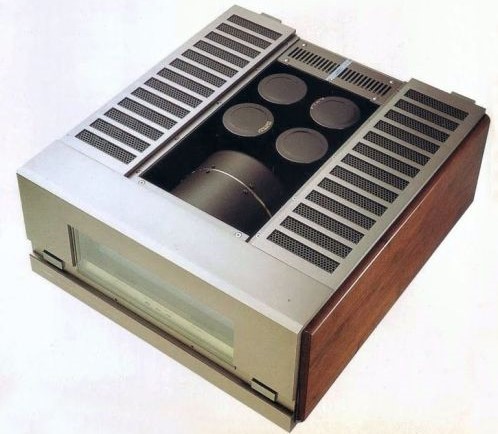
1987 marked the 100-year anniversary of Yamaha, and to commemorate the event, the company’s engineers were freed from all budget constraints to create a very special line of separate audio components called the Centennial Series.
This system was noteworthy for its all-out disregard of having to hit a pre-determined price point — a design engineer’s dream. There were so many innovations incorporated into these components, it’s hard to list them all. Their price and weight alone should give you an idea of the build quality of these beauties:
– CX-10000 preamplifier: $7,500 (approx. $17,000 in today’s dollars), 55 lbs.
– CDX-10000 CD player: $3,000 (approx. $7,000 in today’s dollars), 65 lbs.
– MX-10000 power amplifier: $7,000 (approx. $16,000 in today’s dollars), 94 lbs.
Very limited numbers of each were brought into the U.S. market, making them quite rare. When they do show up on the secondhand market, they typically sell quickly. If you are lucky enough to locate one, be prepared to pay in the $15,000 range for the amplifier itself. Luxury never goes out of style!
R-9 Receiver (1986)
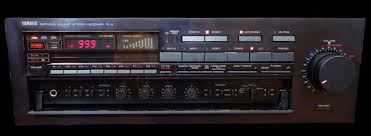
The R-9 was the first Yamaha receiver with video switching, making it the precursor of the modern AV receiver. There were three composite video source inputs: Two were labeled VCR, with input and output switching for video tape recording and dubbing.
But the R-9 was more than just a video switcher: It was equipped with an Auto Class-A circuit that could output up to 5 watts of pure Class-A amplification before switching to standard Class-A/B for higher power needs.
RX-1130 AV Receiver (1989)
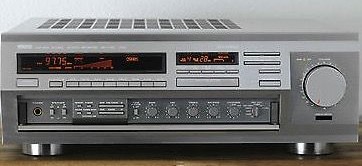
Finishing up the decade, Yamaha launched their first surround sound AV receiver: the RX-1130. This forward-thinking product had four built-in amplifiers and Dolby® surround decoding. (This was before the introduction of Dolby® Pro Logic® with its center channel capability.) It packed a punch, too, with 125 watts to the front speakers and 30 watts per channel to the rears (plenty since Dolby surround sound offered limited bandwidth for the rear speakers). The addition of S-video switching made the RX-1130 highly desirable to not only audiophiles but the videophiles of the day as well.
While the 1970s refined the boundaries of two-channel listening, the 1980s expanded on that foundation and sprinkled in some groundbreaking digital technologies we rely on to this very day. If it wasn’t for the innovations of the ’80s, digital music, surround sound decoding and video integration as we know it today would never have happened.
Check out these related blog articles:
Cult Classics Part 1: Vintage Yamaha Gear of the 1970s
Cult Classics Part 3: Vintage Yamaha Gear of the 1990s
What is an Integrated Amplifier?
Click here for more information about Yamaha AV receivers.
Click here for more information about Yamaha Hi-Fi components.
Click here for more information about Yamaha speakers.










